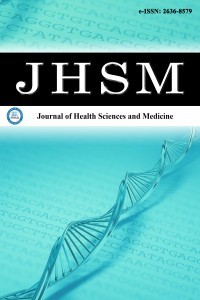1.
Yang X, Yu Y, Xu J, et al. Clinical course and outcomes of criticallyill patients with SARS-CoV-2 pneumonia in Wuhan, China: asingle-centered, retrospective, observational study. Lancet RespirMed. 2020;8(5):475-481.
2.
Lovato A, de Filippis C, Marioni G. Upper airway symptomsin coronavirus disease 2019 (COVID-19). Am J Otolaryngol.2020;41(3):102474.
3.
Meng X, Deng Y, Dai Z, Meng Z. COVID-19 and anosmia:a review based on up-to-date knowledge. Am J Otolaryngol.2020;41(5):102581.
4.
Fotuhi M, Mian A, Meysami S, Raji CA. Neurobiology ofCOVID-19. J Alzheimer's Dis. 2020; 76(1):3-19.
5.
Dziedzic A, Wojtyczka R. The impact of coronavirus infectiousdisease 19 (COVID-19) on oral health. Oral Dis. 2021;27(Suppl3):703-706.
6.
Freni F, Meduri A, Gazia F, et al. Symptomatology in head and neckdistrict in coronavirus disease (COVID-19): a possible neuroinvasiveaction of SARS-CoV-2. Am J Otolaryngol. 2020;41(5):102612.
7.
Paranjpe I, Russak AJ, De Freitas JK, et al. Clinical characteristicsof hospitalized COVID-19 patients in New York City. MedRxiv.2020-04.
8.
Zhu J, Zhong Z, Ji P, et al. Clinicopathological characteristics of8697 patients with COVID-19 in China: a meta-analysis. FamMed Commun Health. 2020;8(2):e000406.
9.
Stowell S, Guarner J. Role of serology in the COVID-19 pandemic.Clin Infect. 2020;71(8):1935-1936 doi. org/10.1093/cid/ciaa510
10.
Goërtz YM, Van Herck M, Delbressine JM, et al. Persistentsymptoms 3 months after a SARS-CoV-2 infection: the post-COVID-19 syndrome? ERJ Open Res. 2020;6(4).00542.
11.
Kissler SM, Tedijanto C, Goldstein E, Grad YH, Lipsitch M.Projecting the transmission dynamics of SARS-CoV-2 throughthe postpandemic period. Science. 2020;368(6493):860-868.
12.
Yang Z, Wang S, Li Q, et al. Determining SARS sub-clinicalinfection: a longitudinal seroepidemiological study in recoveredSARS patients and controls after an outbreak in a general hospital.Scandinav J Infect Dis. 2009;41(6-7):507-510.
13.
Carfì A, Bernabei R, Landi F. Persistent symptoms in patients afteracute COVID-19. JAMA. 2020;324(6):603-605.
14.
Garrigues E, Janvier P, Kherabi Y, et al. Post-discharge persistentsymptoms and health-related quality of life after hospitalizationfor COVID-19. J Infect. 2020;81(6):e4-e6.
15.
Li J, Wang X, Chen J, Cai Y, Deng A, Yang M. Association betweenABO blood groups and risk of SARS-CoV-2 pneumonia. Brit JHaematol. 2020;190(1):24.
16.
Göker H, Karakulak EA, Demiroğlu H, et al. The effects of bloodgroup types on the risk of COVID-19 infection and its clinicaloutcome. Turk J Med Sci. 2020;50(4):679-683.
17.
Jimenez-Ruiz CA, Lopez-Padilla D, Alonso-Arroyo A, Aleixandre-Benavent R, Solano-Reina S, de Granda-Orive JI. COVID-19 andsmoking: a systematic review and meta-analysis of the evidence.Archivos de Bronconeumol. 2020;57:21-34.
18.
Jean SS, Lee PI, Hsueh PR. Treatment options for COVID-19: Thereality and challenges. J Microbiol Immunol Infect. 2020;53(3):436-443.
19.
Udwadia ZF, Singh P, Barkate H, et al. Efficacy and safety offavipiravir, an oral RNA-dependent RNA polymerase inhibitor,in mild-to-moderate COVID-19: A randomized, comparative,open-label, multicenter, phase 3 clinical trial. Int J Infect Dis. 2021;103: 62-71.
20.
Liu J, Cao R, Xu M, et al. Hydroxychloroquine, a less toxicderivative of chloroquine, is effective in inhibiting SARS-CoV-2infection in vitro. Cell Discovery. 2020;6(1):16.

